Snowshoe Cat 101: The Essential Guide
| Origin | United States |
| Size | Medium-Large |
| Height | 8 to 13 inches |
| Weight | 7 to 14 pounds |
| Life Expectancy | 14 to 20 years |
| Breed Group | Pedigree |
| Affection Level | ⭐⭐⭐ |
| Friendliness | ⭐⭐⭐ |
| Activity Level | ⭐⭐⭐ |
| Meowing Level | ⭐⭐⭐ |
| Pet Friendly | ⭐⭐⭐ |
| Kid-Friendly | ⭐⭐⭐ |
| Shedding | ⭐ |
| Easy to Groom | ⭐⭐⭐ |
| Easy to Train | ⭐⭐⭐ |
Table of Contents
Origin
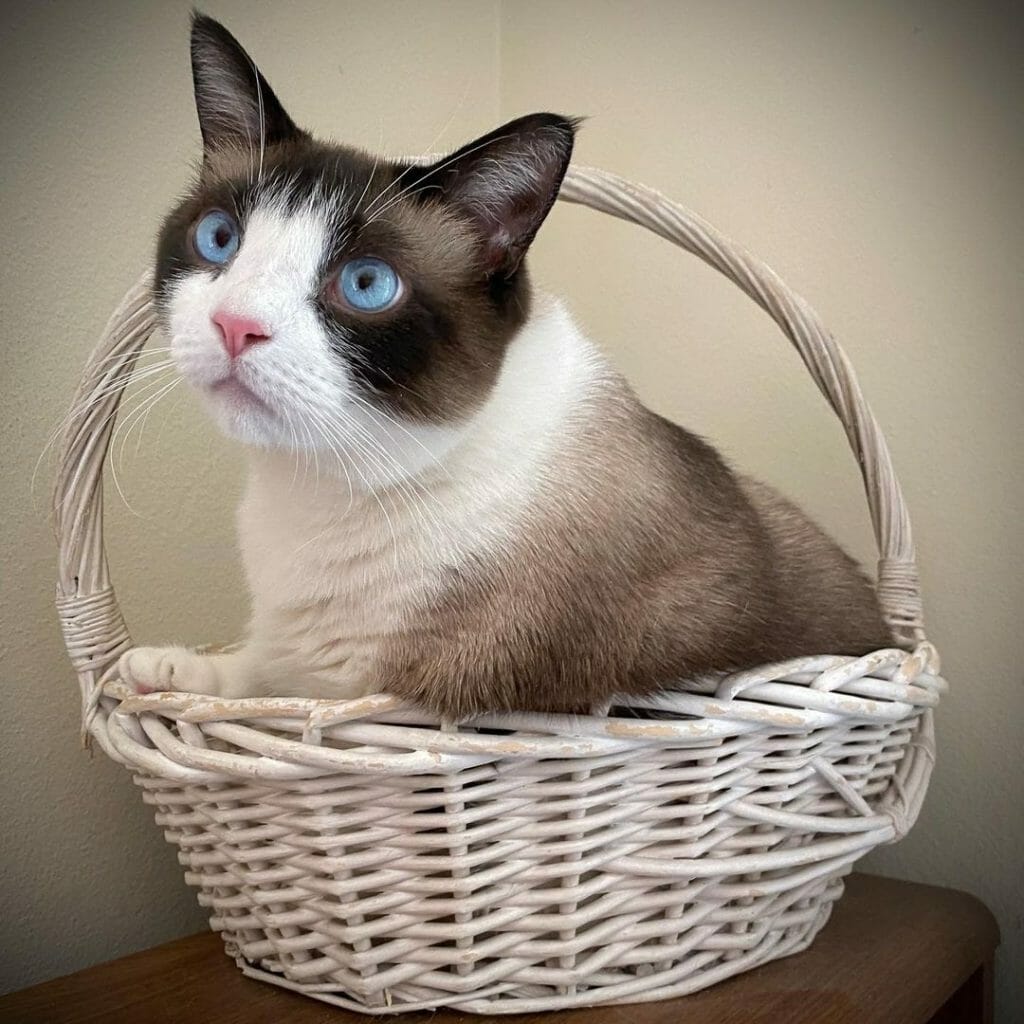

The Snowshoe cats, also known as the “Silver Laces”, are believed to exist way earlier than the 1960s, but it was during this year when Dorothy Hinds from Florida made a significant discovery in a purebred Siamese litter. A few of the kittens showed a distinct and unusual appearance far from how a Siamese is expected to look. What she instantly noticed from these kittens are their remarkable white paws and unique point color.
Her fascination led her into crossbreeding the Siamese and a Short-haired cat with tuxedo markings. This breed is hard to perfect when it comes to the ideal color points. In the 1970s, there was only one Snowshoe breeder, but this feline eventually became recognized by the Cat Fanciers Federation (CFF) in 1982 and The International Cat Association (ICA) in 1994.
Appearance
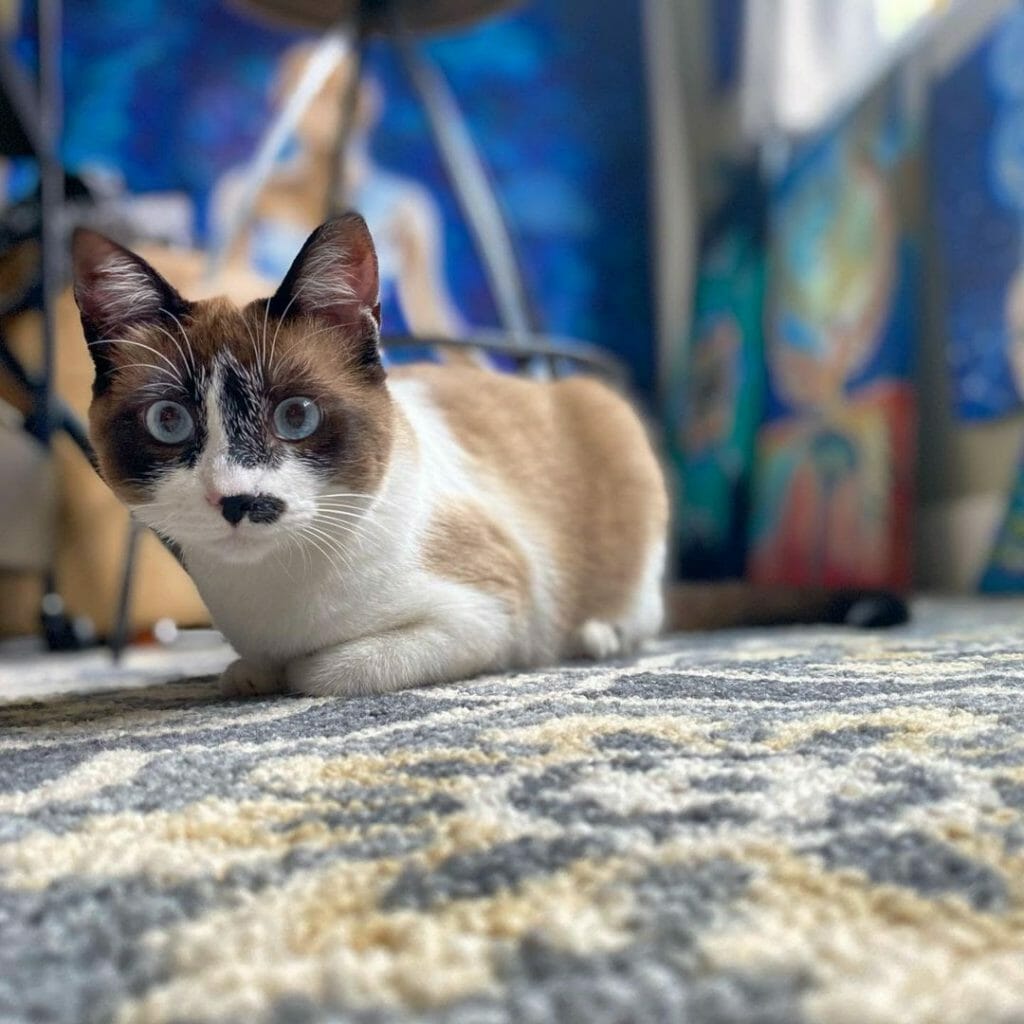

Snowshoe kittens are actually born all-white! Their markings will eventually show as they grow older. Initially, the patterns will appear after 1 to 3 weeks and each little Snowshoe will enjoy a unique set of markings. Once they are fully mature, you’d notice their extreme resemblance to their ancestry.
Coat
Typically, their coats are short to medium in length. It has to be smooth and vibrant with no existing undercoats. Due to their coat type, Snowshoes are a great choice for family members who suffer from pet allergies! If your playful Snowshoe has a plush or double coat, cat associations will deem this as a fault.
Color
If you are a cat lover, you will be hooked on this breed’s variety of colors to choose from! Although, of course, you wouldn’t be able to see the colors right away when they are newly born, you can directly ask your breeder what colors to expect. Here are your options:
- Blue
- Black
- Cream
- Chocolate
- Seal
- Cinnamon
- Fawn
The other more colors that are solely recognized by the Fédération Internationale Feline (FIF) are:
- Tabby
- Tortoise-shell tabby
- Tortoise-shell
Size & Weight
You may be the type to enjoy cuddling with your pets and Snowshoes might just tick the box! Snowshoes are medium-large cats but are compact and perfect for cuddles. He weighs 7 to 14 pounds and his height can be anywhere around 8 to 13 inches. It is a given that the male Snowshoe will be bigger than the female counterpart.
Temperament
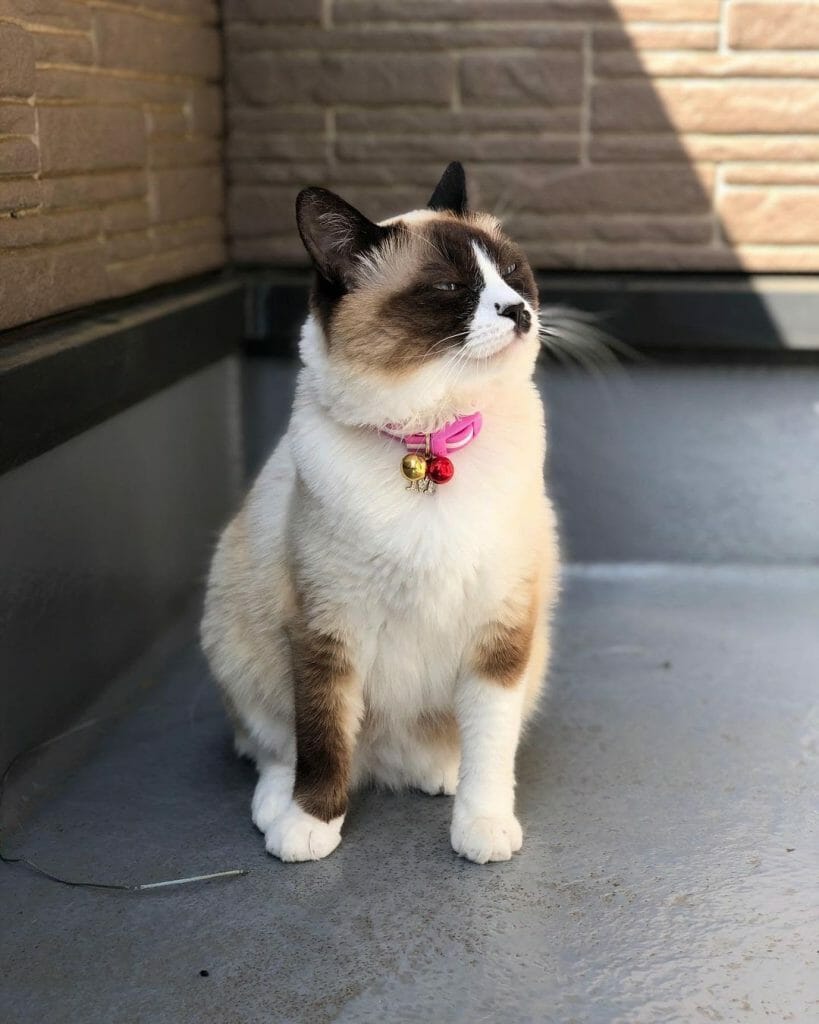

You can never predict how your furry Snowshoe’s Temperament will be like once he matures. There will be several factors that will shape him as he grows. Expect him to fully stick to it and it is either you keep encouraging him on his behavior or change it through proper training. This specific cat breed does not do well with changes in routine. He may feel stressed out once he notices that there are interruptions or new additions to his daily activities.
With that in mind, give him his meals during the times when he expects them to be served. As much as you can, refrain also from removing furniture or redesigning the room.
Some cats of this breed tend to be very devoted family pets who would think of themselves as equal to humans and they prefer to lead rather than follow. Other Snowshoes might exhibit a sense of playfulness and goofiness just to keep their owners laughing at their silliness.
Affection
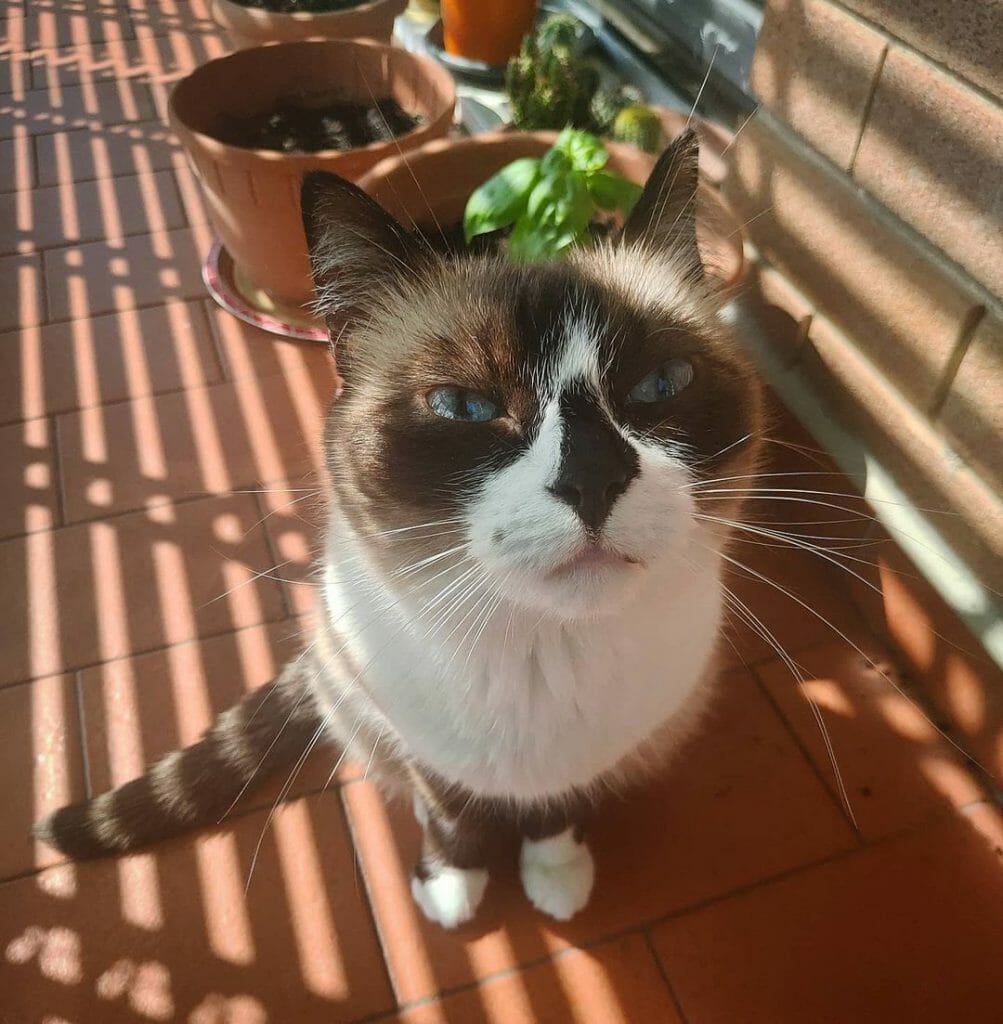

Should you decide to bring a Snowshoe kitty to your home or apartment, ready yourself for this love-thirsty cat! He is naturally affectionate and would love to be petted and hugged all the time. As long as he is raised in a loving environment and was taught that being touched is okay, this cat’s pupils will surely dilate with overwhelming feelings of affection toward you when you both make eye contact.
His docile nature would mean that he must never be left alone by himself. If he could only decide for himself, he’d choose to be with you all the time. If he develops separation anxiety, destructive behaviors will show.
Many Snowshoe owners have shared how perfect Snowshoes are as family pets. They are laid back, easy-going, and more sociable than any other cat breeds.
The cat’s affection will most likely draw toward the person who constantly feeds him and takes care of him, so if you want to win his trust, try to always be the one to give him his meals and ensure that he feels safe and secure.
Friendliness
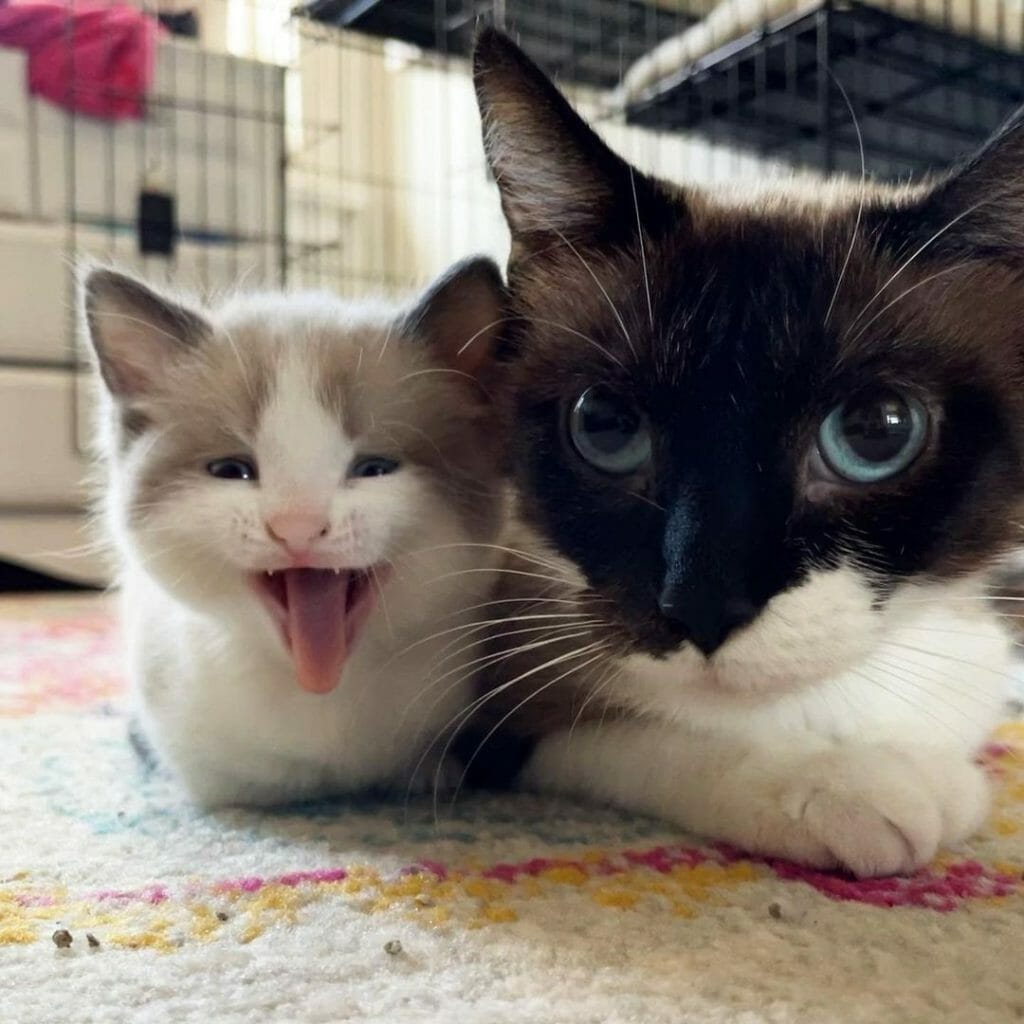

Snowshoes enjoy the idea of being social. They behave well around kids who can play and admire their fluffiness without being careless or rough. Attention is a real currency to earn the attention of this cat breed. The same applies to other family dogs. It is highly suggested that if ever you decide to bring a pet dog at home, the canine must be friendly and not create tension inside especially toward the cat. Some dogs have a high prey drive and may chase after cats, so be careful which pooch should you go for.
You may have noticed that some cats are scary and can hurt or scratch anyone. This is the result of a poor upbringing and therefore needs a committed and loving owner. Dangerous Snowshoe cats may repel anyone who will try to gain his trust, but if you pursue taking care of him and positively enforce him, the cat will eventually learn how to be friendly.
If you are out for the most part during weekdays, hire a pet-sitter or simply make sure your Snowshoe has a companion. Just like most dogs, this cat breed can’t stand being isolated.
Activity Level
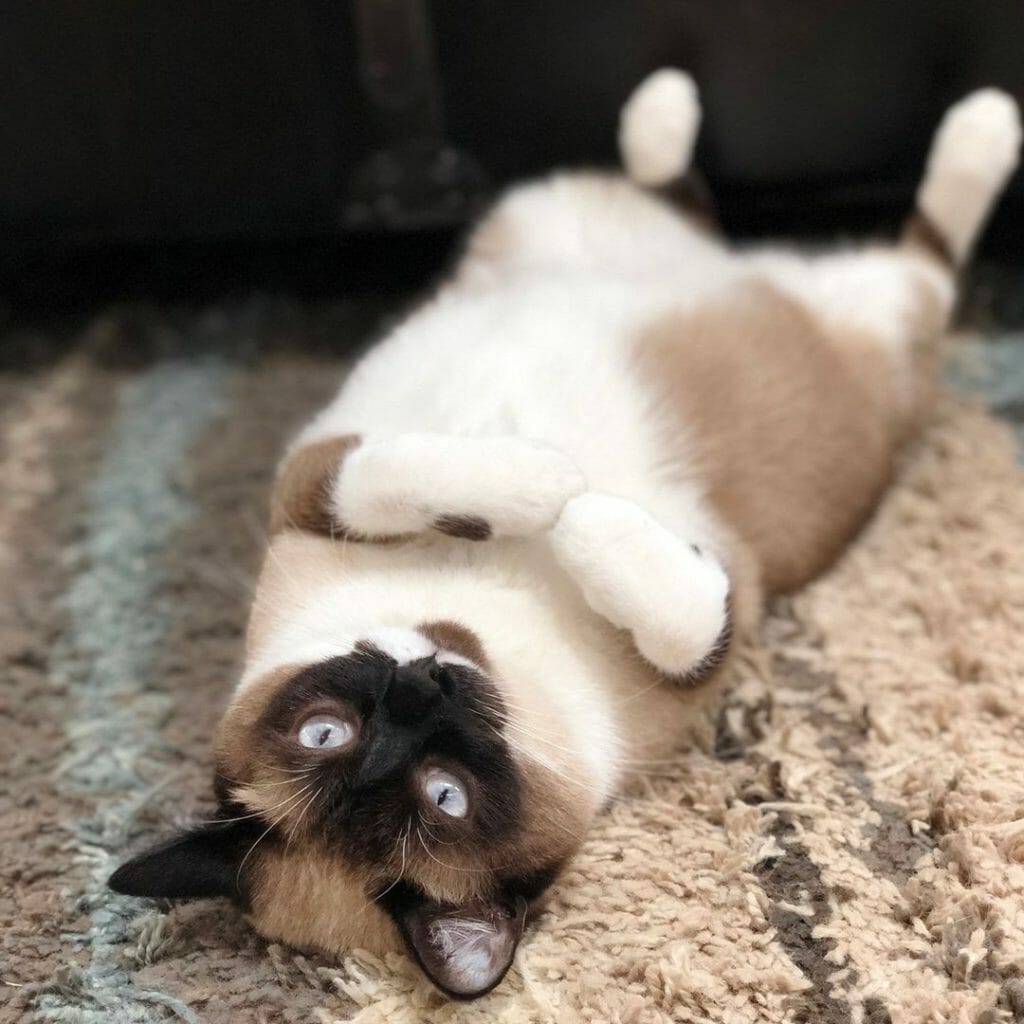

Snowshoe cats like to play with their owners as much as they want. If you are doing your homework, he would most likely not let you do your own thing. He’ll jump on your lap and try to distract you or lay around on top of your books. If you get his favorite toys and flash them on him, his mood will instantly boost and he’s ready to pounce and pretend like he just caught prey.
But of course, as expected from cats, Snowshoes will need their daily recharge. Generally, cats sleep for about 15 hours a day including naps. This is their way to gather all the energy to prepare for whatever adventures they’ll have once they are wide awake and alert.
Keep your cat preoccupied at all times. In most cases, if he is bored, unwanted behaviors will show such as meowing all night, causing a ruckus, or being aggressive. It is necessary that they release their pent-up energy.
Care
Snowshoe cats won’t demand much of your resources as they are part of the low-maintenance class. They are independent-thinkers who can survive on their own in a considerable amount of time. However, having them as pets would still mean taking care of their basic needs. They need care and attention, and some cats may require more than others.
Grooming
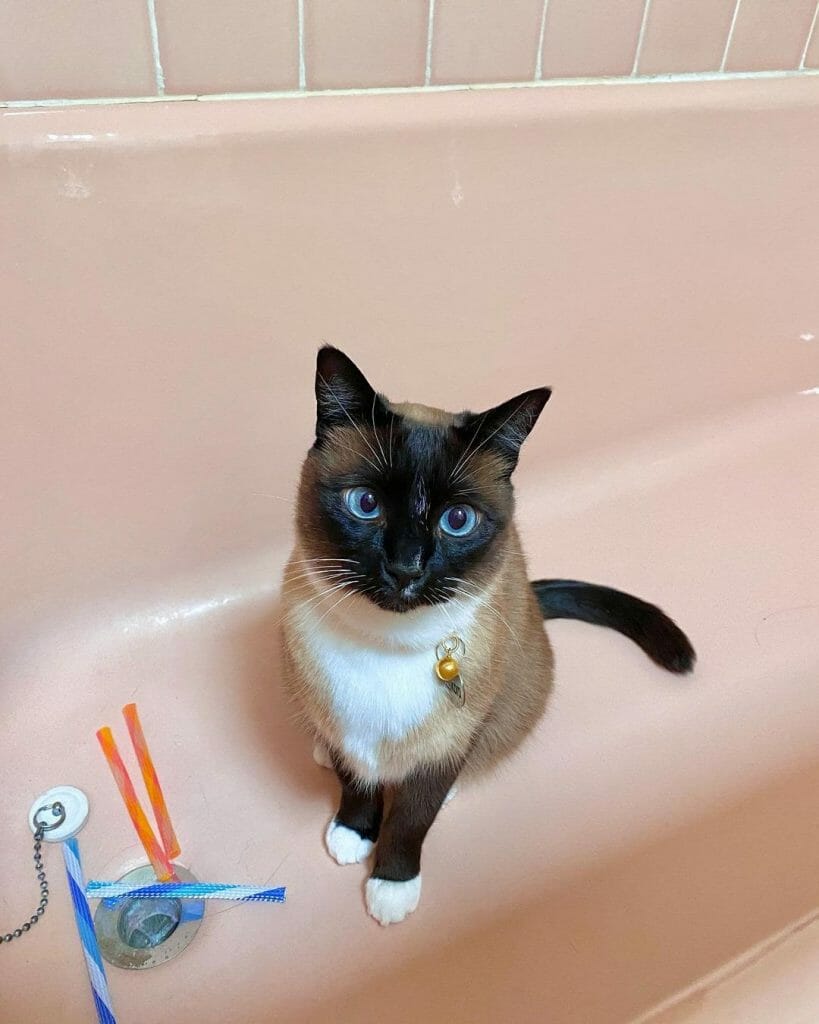

It is during springtime that you have to brush your Snowshoe more often. This is the period when he will shed more often than usual as a way of preparing his body to adjust to the upcoming warm temperature. The fur he accumulated during the winter season will gradually come off, so if you have a family member who has allergies, vacuuming the place as often as possible is needed.
Do note, however, that this cat breed doesn’t shed as much as others do due to the absence of their undercoats.
Generally, brushing can be done once a week. You can groom him every two weeks as well to ensure that he is free from lumps, wounds, and any type of skin infections. If you can help it, checking his ears regularly for excessive wax buildup can also improve his hygiene. This also prevents any developing issues that may lead to worse conditions.
Food and Diet
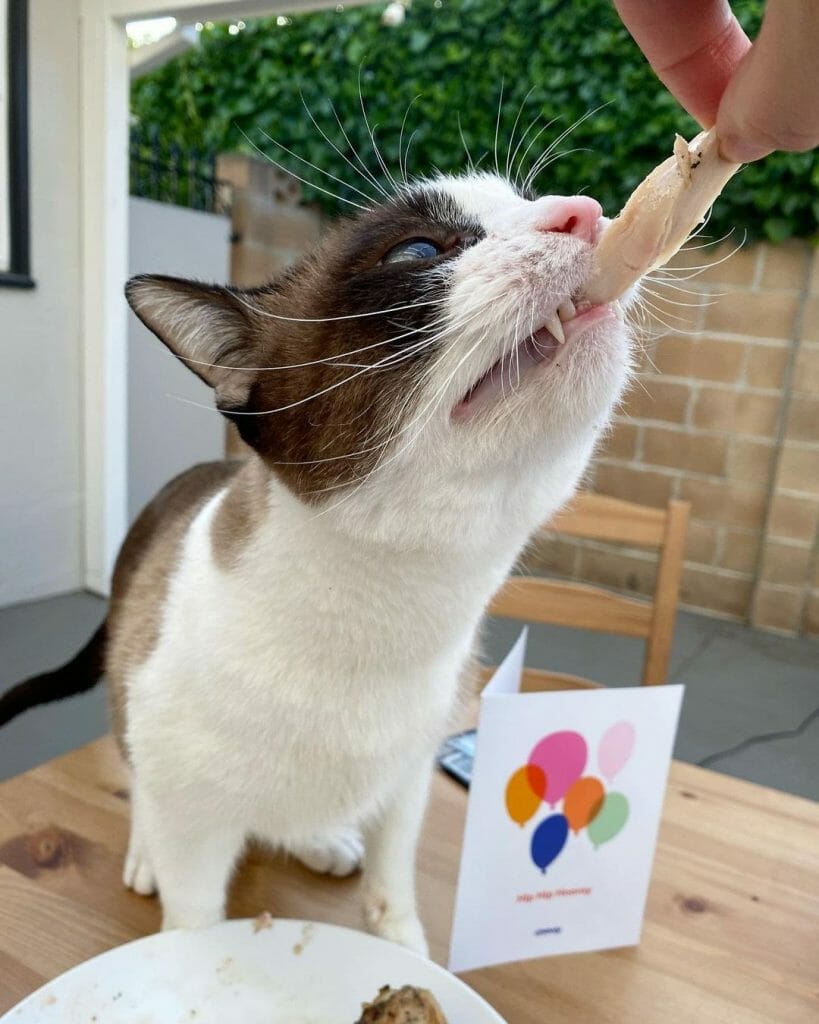

The moment you bring home a Snowshoe kitten, it is always a good idea to stick to the breeder’s first initiated routine for mealtimes. With that in mind, try to give him the same kind of food to avoid upsetting your kitten’s stomach caused by a sudden change in diet. Sometimes, the Snowshoe breed may suffer greatly when there is an abrupt changing of cat food due to ingredients they can’t immediately tolerate.
Of course, after some time, there would be the need to shift it to an adult cat food as he matures. You have to do this slowly by incorporating a small portion of the new food into his old food every week in the same amount provided until you fully get him to transition to the new food.
By doing this little by little, you would be able to monitor how your furry pet would react to the new substance in his meal. If he happens to have bad reactions to the food, you may also address this immediately rather than realizing it too late when you have already given him a big portion.
Additionally, cat food may come off as expensive to some, but investing in high-quality meals is one of the means to keep your cat from future medical bills. Ensure that your little feline is complete with all the needed vitamins and minerals so he could enjoy a fulfilling and healthy life.
Monitor his weight too. An obese cat can experience more health issues like joint issues and diabetes. If you think your cat knows how to control his eating, free access to fresh food is okay, if not, you have to control it.
Exercise
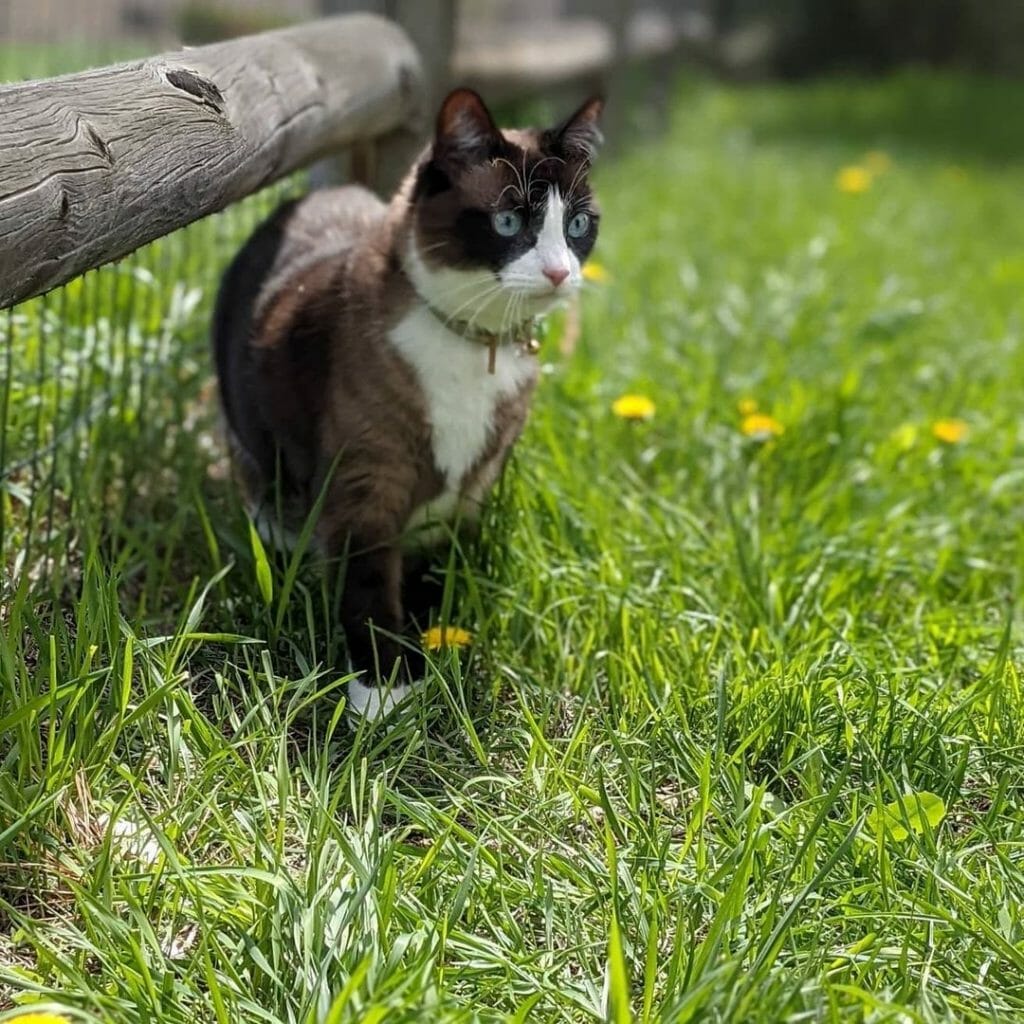

More than 50 million Americans decided to have a cat as a companion in life. It is no surprise since cats, unlike dogs, don’t need daily outside walks, training, and even exercise that would require an overseer. Depending on which type of cat you have and how often he gets to remain indoors and outdoors, exercising must still occur regularly to keep them energetic.
Cats who have free access to outside environments get to stimulate their bodies by applying their instinct to chase after birds or if you give them their toys, they might pretend that they just caught a bounty. If trees are surrounding your area, they will also take advantage of them and try to climb as high as they can reach. Snowshoes like to understand their environment and this can be done better when they are up high.
Due to their predatory nature, avoid declawing your cats as this will impair them from doing what cats will normally do.
For cats who prefer to stay indoors, cat owners advocate at least 30 minutes of exercising their pet. Not only does this encourage your feline to stay fit, but it also keeps him healthy.
Training
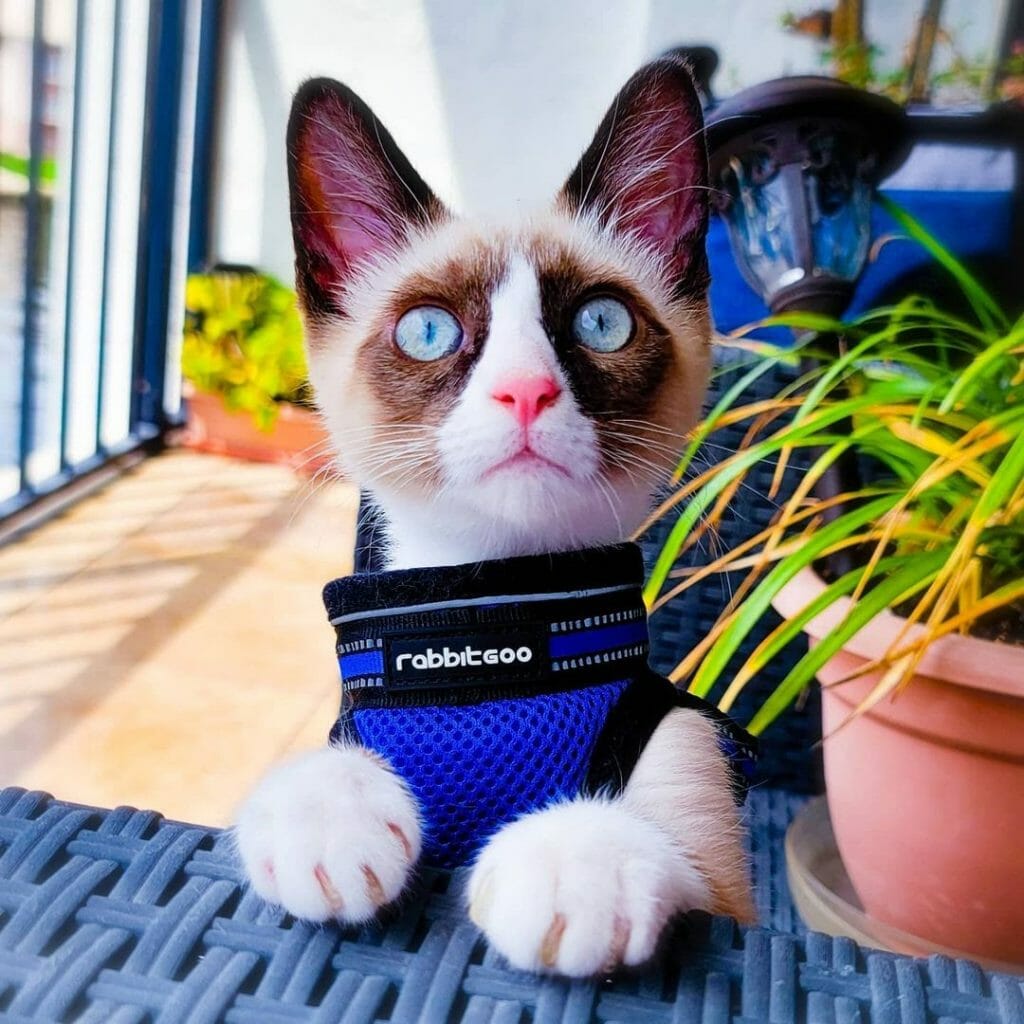

Contrary to what many people believe, cats such as the Snowshoes are trainable. They are highly intelligent and capable of learning tricks, even agility training although the method would be far different from that when teaching a dog. Research has shown that felines are more independent than canines, therefore, your Snowshoe will mostly listen to himself rather than his owner. In training, merely giving him praises will not do the magic.
In training this Snowshoe cat breed, new behaviors must be reinforced with a positive, reward-based system. Cats are less likely to respond well if the owner exhibits dominance or uses punishments. Both are not only counterproductive but as well as ineffective and would only cause a stressful environment for your innocent little cat.
To know how to properly train this Snowshoe cat breed, here is an overview of what you may impose:
- Use special treats as reinforcements. Cats prefer special rewards, especially if they are sticky, gooey, and stinky. Diced tuna, turkey strips, and chicken might work too depending on what your cat prefers.
- Get him used to receiving a reward every after showing a specific behavior. Let him understand that your training is not only beneficial for your cat but is also rewarding because of the treats he will receive in the end.
- Regular practice. Establishing a routine for your cat will make it harder for him to forget what he learned. Snowshoes love routines, so it is better if you expose him to training at the onset of his arrival at your home!
- Use clickers as means to reinforce timing. Introducing a sound to your cat will get him to learn if he did well or that he will be receiving a treat.
- Let him master the first trick before moving on to the next. Never leave your cat hanging! Make sure he perfects the routine first before letting him learn a new one. Moving on too early might make him forget the previous trick and that would mean wasted efforts.
Health Problems
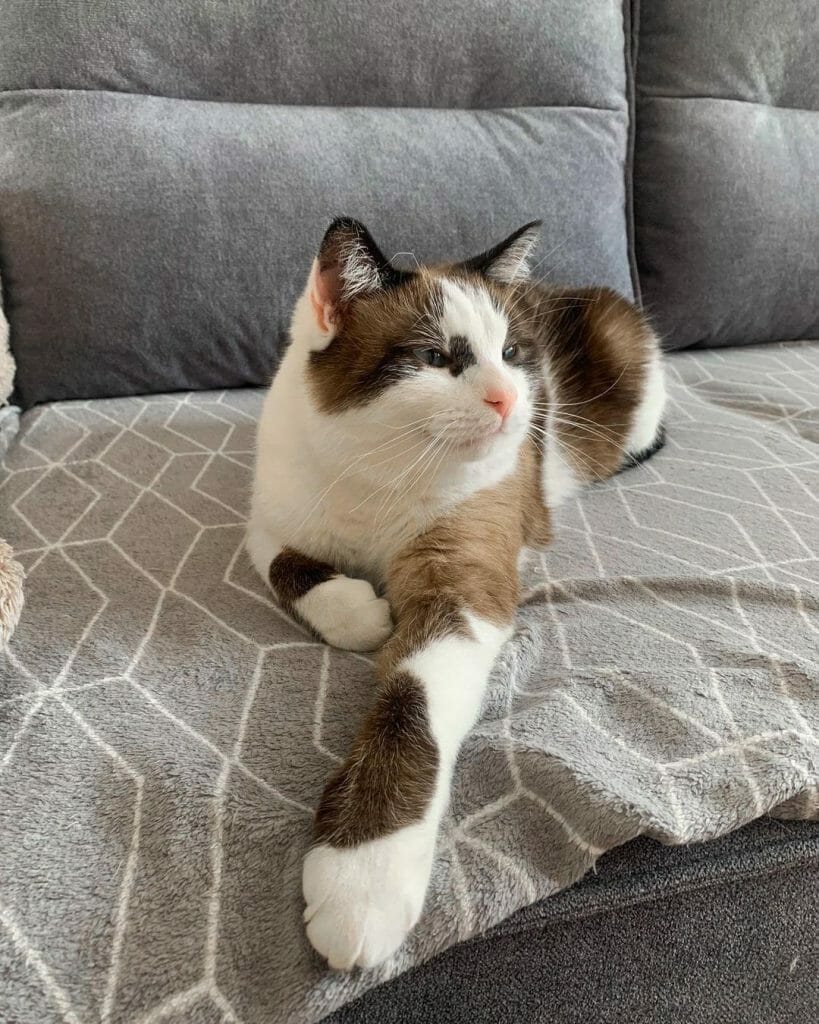

Due to being such a relatively new breed, there are still insufficient details regarding health problems they might inherit. With that, the Snowshoe cat breed is deemed a generally healthy one. On certain occasions, they may be prone to the usual Siamese faults such as the kinked-tails and the crossed-eyes. If your Snowshoe has these odd physical characteristics, there is no need to worry. Both conditions don’t affect their health at all.
One common disease cats may have is one that is related to teeth. If your cat is tolerant enough, insert a brushing activity on the schedule and bring him to the vet for regular dental checkups. Early examinations will detect early signs and symptoms and can highly cut the cost of your cat’s future medical costs.
Other common health issues your Snowshoe may experience are:
- Vomiting
- Feline Rhinotracheitis Virus Infection (Coryza)
- Progressive Retinal Atrophy
- Feline lower urinary tract disease (FLUTD)
- Diabetes
- Arthritis
- Fatty liver (if your cat is overweight)
If anything unusual manifests in your cat’s behavior such as the look of discomfort and pain, bring him to your nearest veterinary office right away for an immediate diagnosis.
Pros and Cons of Having a Snowshoe Cat
Pros
- Beautiful and unique appearance
- Expressive and quirky
- Compact
- Affectionate and cuddly
- Low-maintenance
- Generally healthy
- Rare and special
- A self-cleaning pet
- Great as stress-relievers
Cons
- They are very difficult to find
- Can’t stand being alone for long periods of time
- Buying one can be costly
- Too chatty
- A bit challenging to train
- You won’t know beforehand the kind of temperament he’ll be having
- May tend to be aloof
- Might enjoy scratching furniture
Do Cat Associations Recognize Snowshoe Cats?
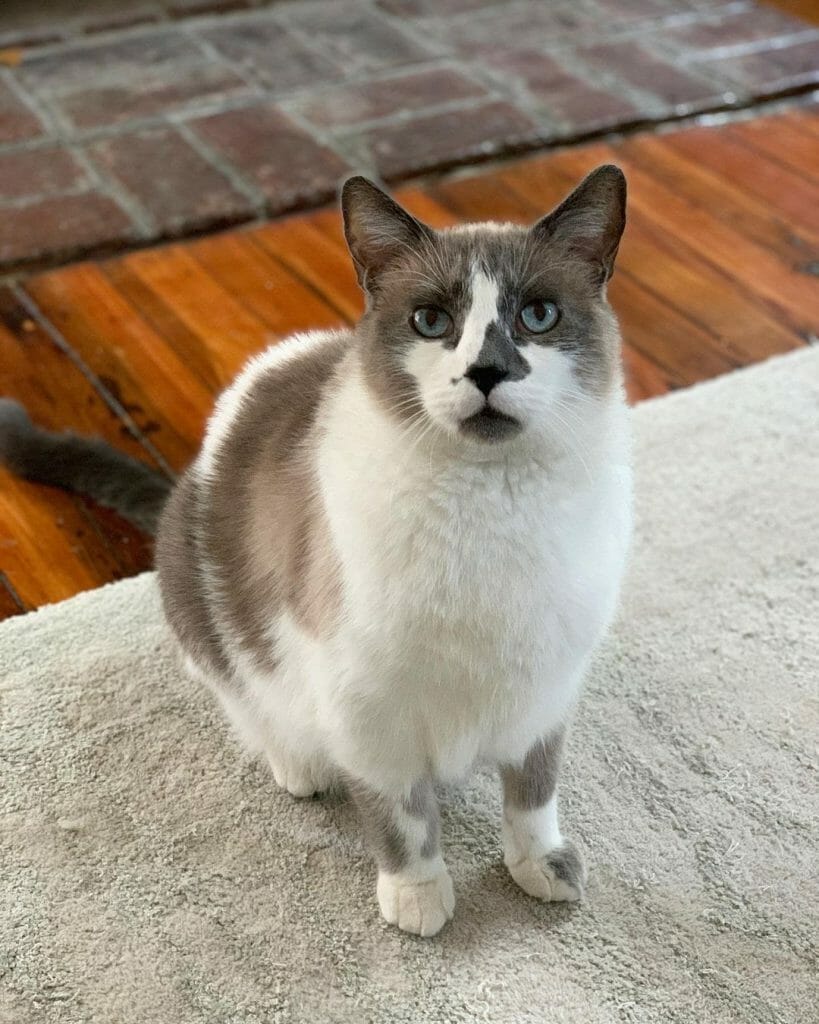

Yes, they do! Several major cat organizations widely acknowledge this new feline breed. The recognition started back in 1974 when the American Cat Association (ACA) and the Cat Fanciers Federation (CFF) gave the Snowshoe the status, “experimental breed.” It was then during 1983 when this cat gained “champion status” from the CFF. By 1990, the American Cat Fanciers Association agreed to give this breed the same title, followed by The International Cat Association in 1993.
Other more organizations such as the Fédération Internationale Féline and the Cat Fanciers Federation fully acknowledge the Snowshoe cat breed. Currently, breeders are working hard to attain another acceptance from the Cat Fanciers Association. However, since there aren’t enough Snowshoe cats including breeders, the requirements are yet to be completed.
Cost
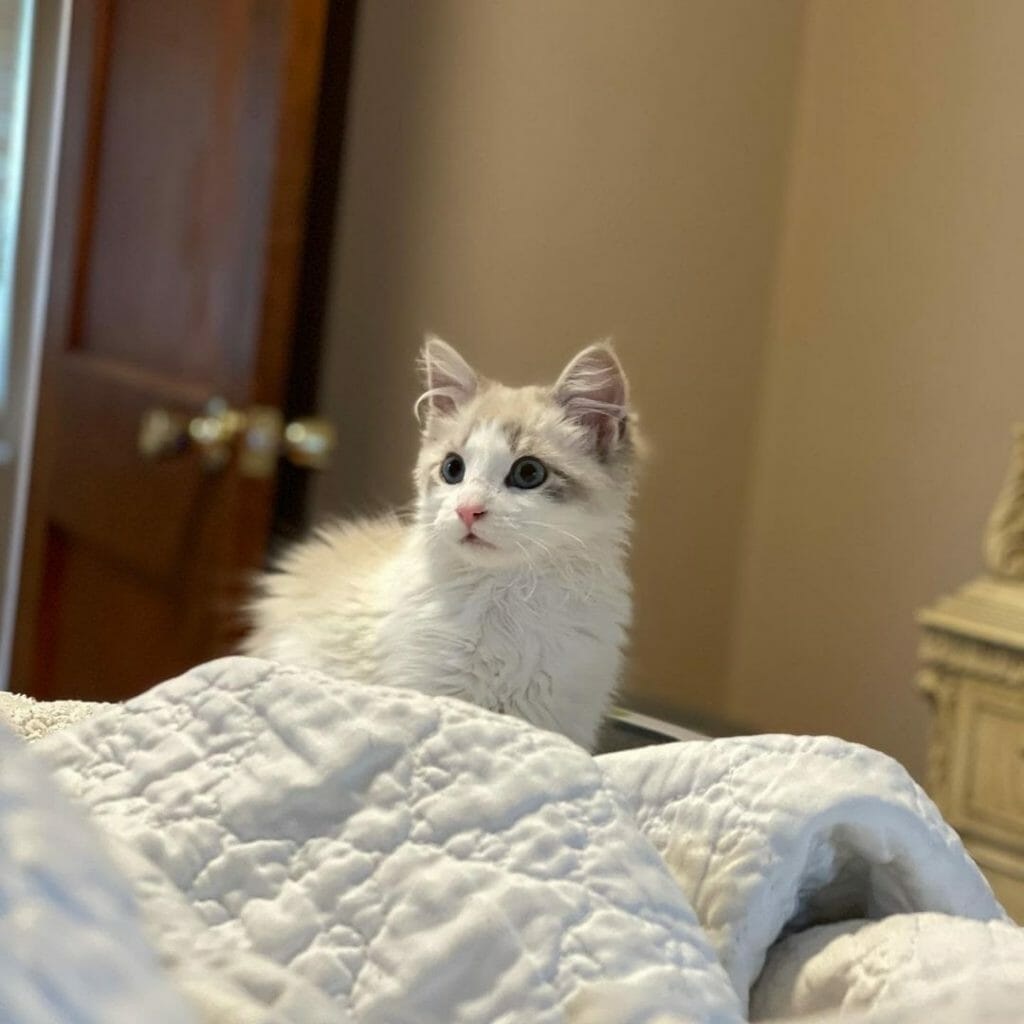

The price tag for a Snowshoe cat can greatly vary depending on where you choose to buy him from. If your number one option is from a shelter home, a kitten may be sold at $200 and $120 for an adult. The fees these adoption centers may charge you are their means to accumulate more budget to continue supporting the needs and expenses of the other cats that are waiting to be adopted.
If you go for breeders, you might need to save up to $1200 before you can have this cuddly cat. Usually, they will ask for a cash advance of $50 to $100 to secure a kitten from an upcoming litter. It can be pricey for this option, but you are at least guaranteed that you get a healthy kitten who has undergone a series of health tests.
Where to Adopt or Buy a Snowshoe Cat
Thinking of getting a rescue cat? There are numerous reputable online websites that you can visit which might just grant you your dream of having this rare breed. You can check some of them below:
If by any chance, no Snowshoes are available in your nearest cat shelter homes, you may also check on these trusted breeders online. Here are some of the reputable websites you may want to check:
The Snowshoe’s cute and rare features aren’t the only reasons why you must go for him if you’re thinking of getting a cat as a family pet. There is more to it than his white markings on the paws. His chatty personality can liven up your home again and bring a spark of happiness to everyone’s faces.
He may be hard to train but never underestimate his capacity to learn. He simply just likes to mess with you at times due to his quirkiness. The Snowshoe cat will forever entertain you with his peculiar personality, so what’s a better way to experience it than to have one?
